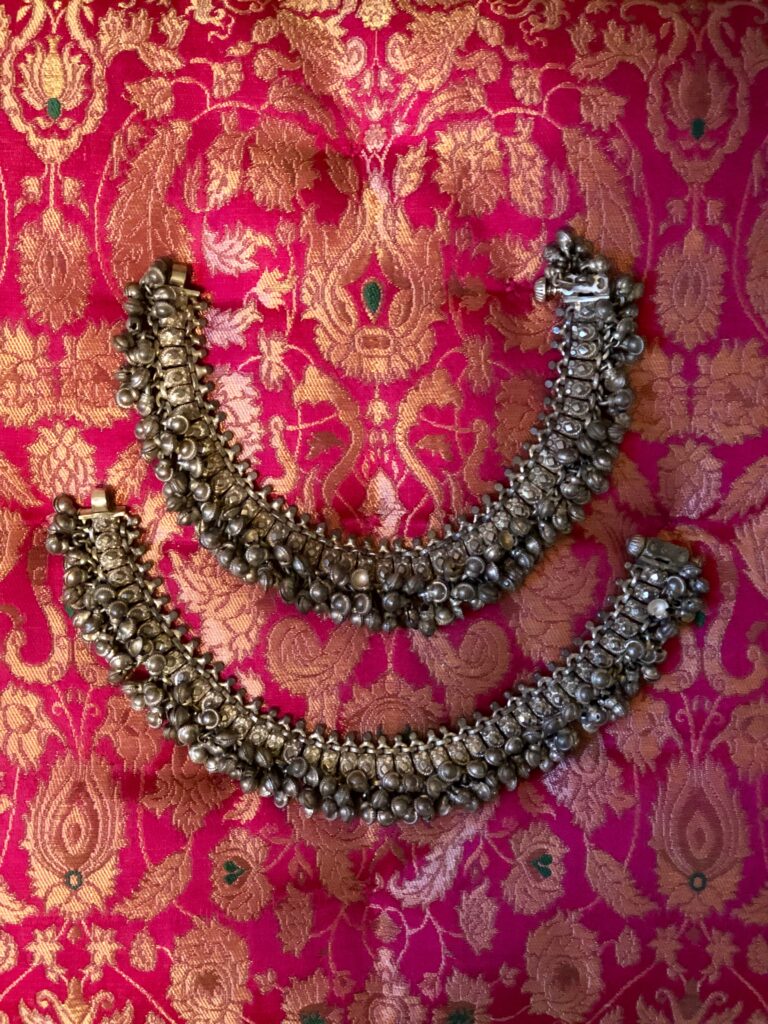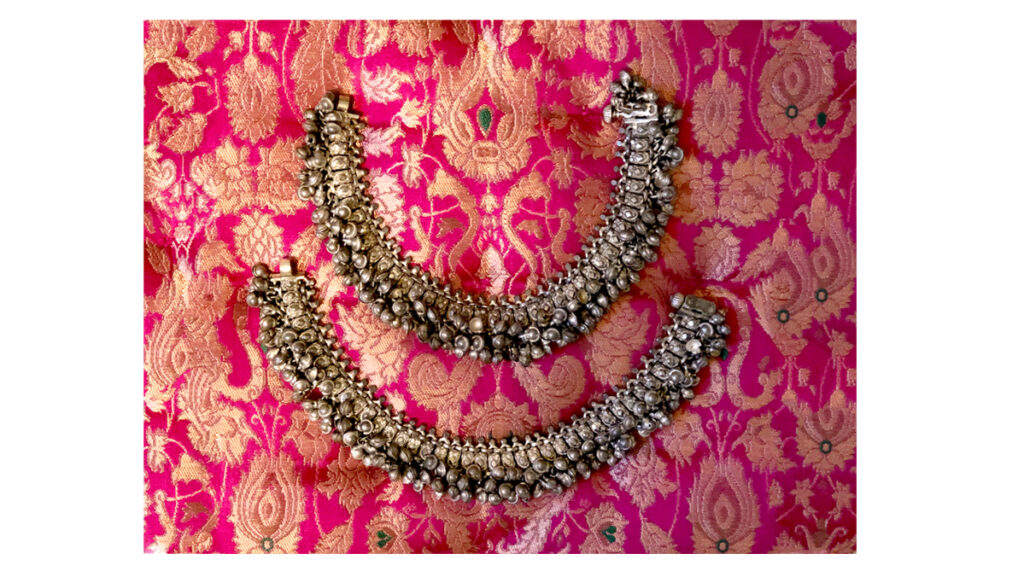TEXT & PHOTOGRAPHS BY RAINA K. PATEL
New York City, New York
This pair of ornatelyhandmade jhanjhar, anklets,are cast in pure silver, and once belonged to my maternal great grandmother, Daahi Patel, in the 1920s. She and my great-grandfather, Umaid Veribhai Patel, hailed from a zamindaari family and as landlords, lived in the Kheda District, formerly known as the Kaira District of Gujarat. My grandmother, Kamla, was born on March 11th 1926 and her mother passed away when she was just five years old.
Years after their mother’s passing, in 1943, my grandmother and her younger sister both got married. Incidentally, the two sisters, Kamla and Vimla, married two brothers, Gordhan and Mani Patel and subsequently, moved to Nairobi, Kenya with their husbands. In Gujarat, jhanjhar are considered to be an auspicious gift for new brides and it was on their wedding day, that my great-grandfather split this piece of jewellery between his two daughters, giving them each a single jhanjhar. So far away from Gujarat, it was an intimate way for them both to keep a piece of home and their mother, close to them. Incidentally, the jhanjhar also became a way to carry a piece of their father with them, as on the insides of the ornate anklets were carved the initials U.V, Umaid Veribhai.

Hindu women mostly wore silver anklets as opposed to gold. I am told that this was because Hindus believe gold was a sacred form of Lakshmi, the goddess of luck and wealth, and it would be disrespectful to wear it on the lowest part of the body. These jhanjhar have a fringe of decorative hollow balls called goli and a screw closing. They are quite heavy and weigh 298 grams.
In Nairobi, my grandfather, Gordhan, and his brother worked in the textile industry and imported cloth from Manchester, United Kingdom to various African cities such as Nairobi, Mombasa, Kampala and Dar es Salaam. The pair of jhanjhar remained as they were – one anklet with a sister each, neither ever wearing the complete pair. But in 1976, my grandmother’s sister passed away suddenly and my grandmother kept her jhanjhar for safekeeping. At this time, my mother was just about to move to the United States to start her undergraduate studies at New York University. Of all the siblings and cousins, my mother was the most fond of ornaments and heirloom jewellery and for this reason she was presented the pair of jhanjhar, taking them with her to New York. After long years of being separated, one half with each sister, the pair was finally united.



My mother would wear the jhanjhar on special occasions with traditional Indian clothes and would sometimes even wear them with her western dresses and wedged heels in New York. Today, between my mother, her sister and their two cousin sisters, there are only two daughters. Since I am the youngest and fond of traditional Indian jewelry, much like my mother was, I was presented with the pair.
These jhanjhar have traveled from Undivided India to the vast continent of Africa and finally to America, carrying with them, the stories of the women who wore them. Geographies of land and water have settled into their delicate craftsmanship. When I wear them now and hear their soft and pleasant tinkling, I think of my grandmother, Kamla ba and her lovely demeanor. I think of what it might have meant to own a physical piece of home when having migrated so far away, home remained an intangible memory. Most importantly though, I think about how these jhanjhar symbolize the lives of two sisters, two brothers and two families uniting as one.

